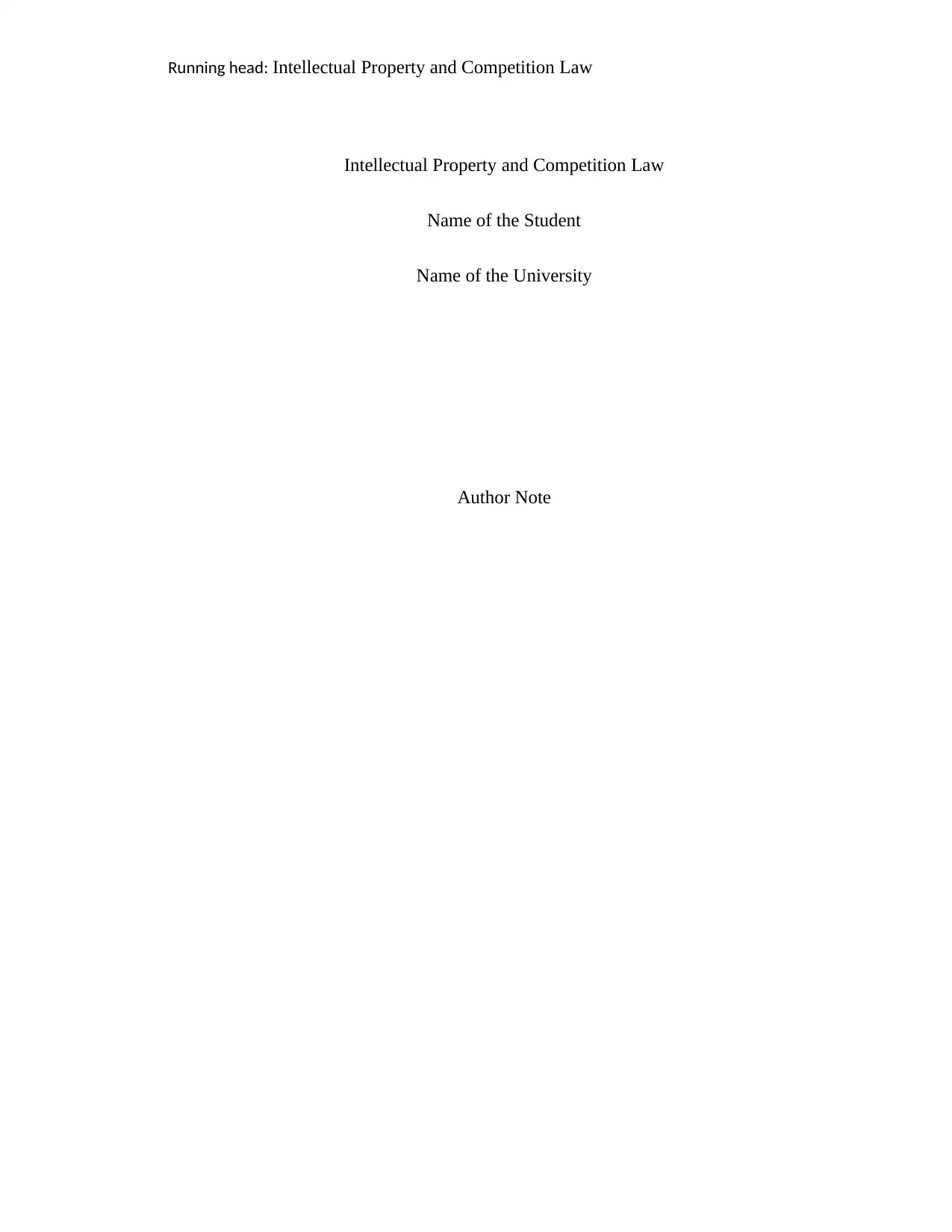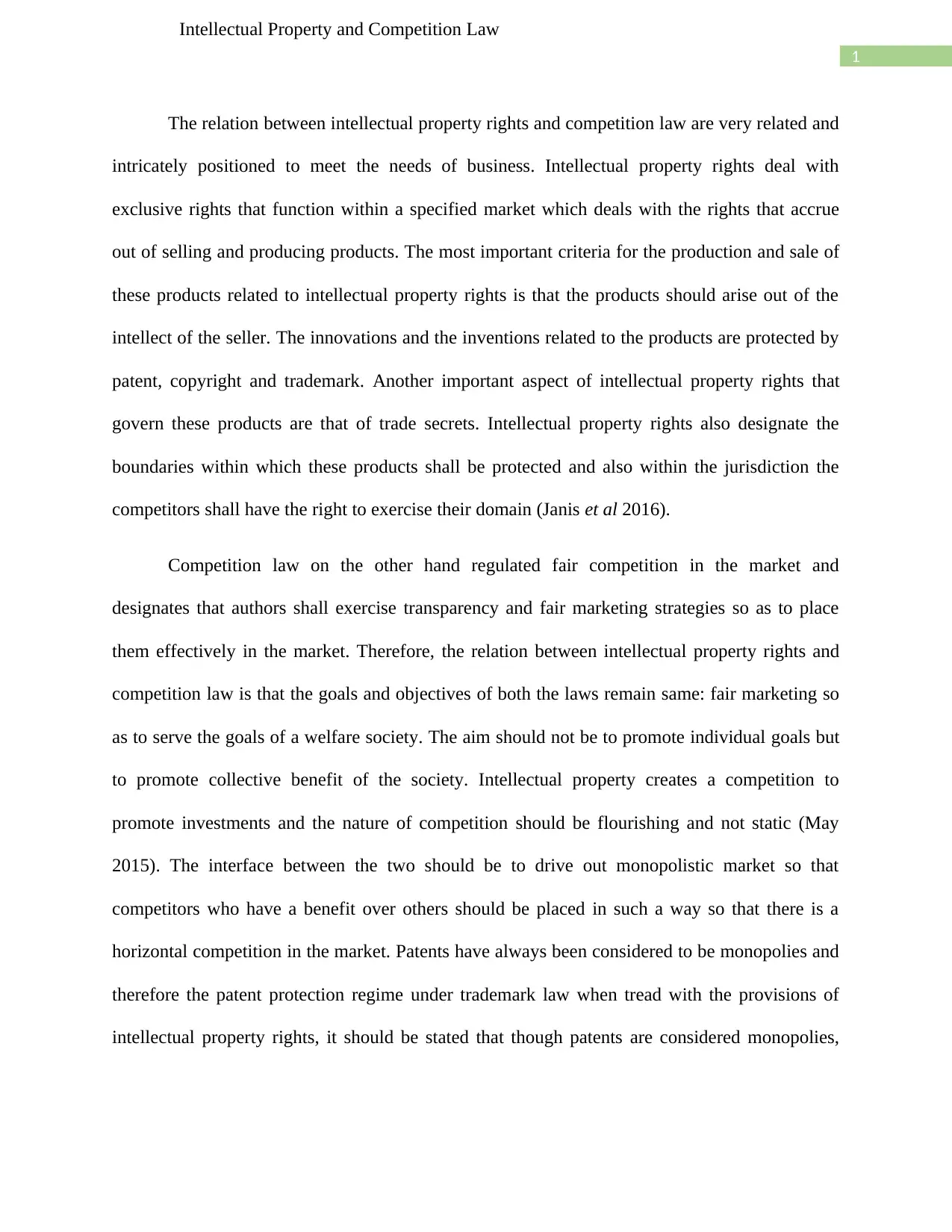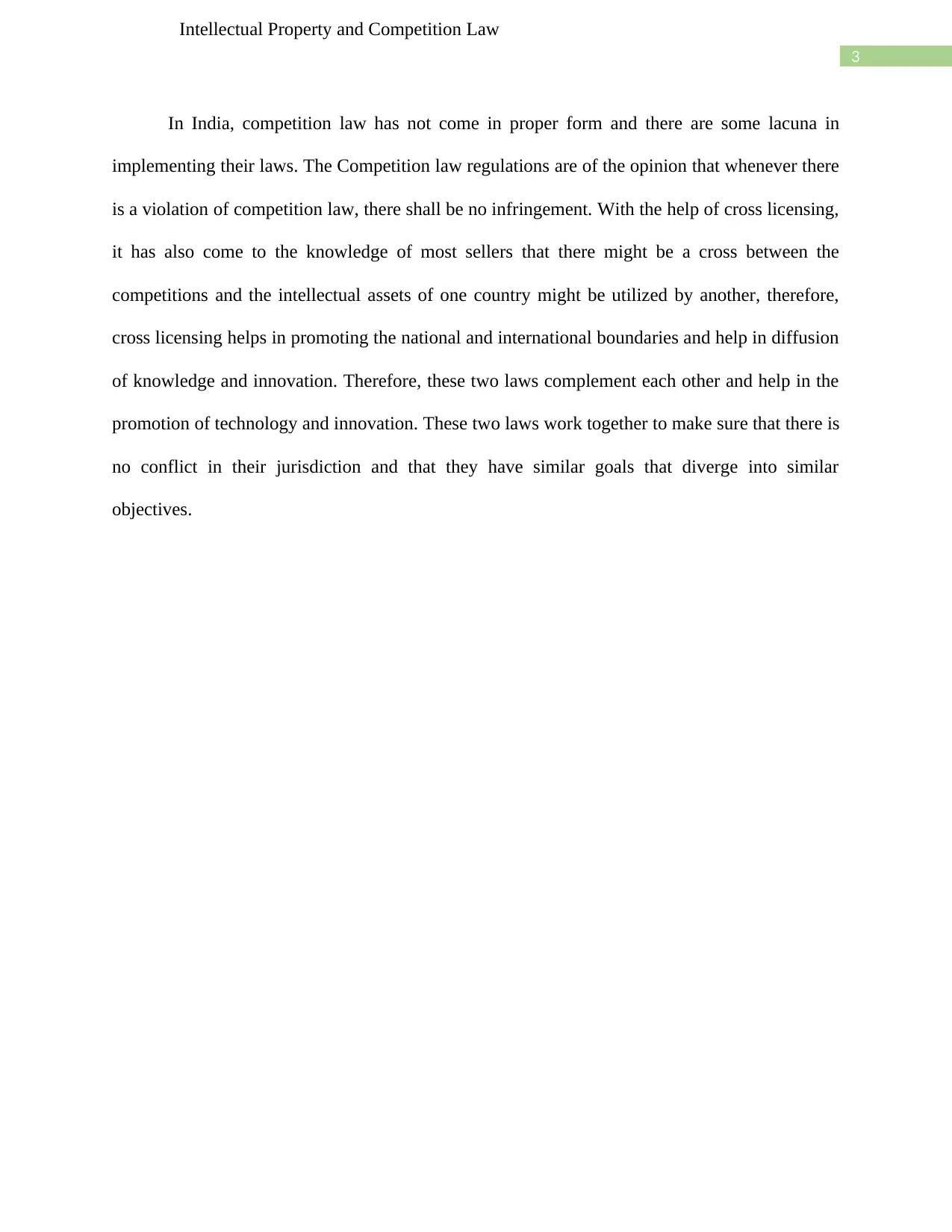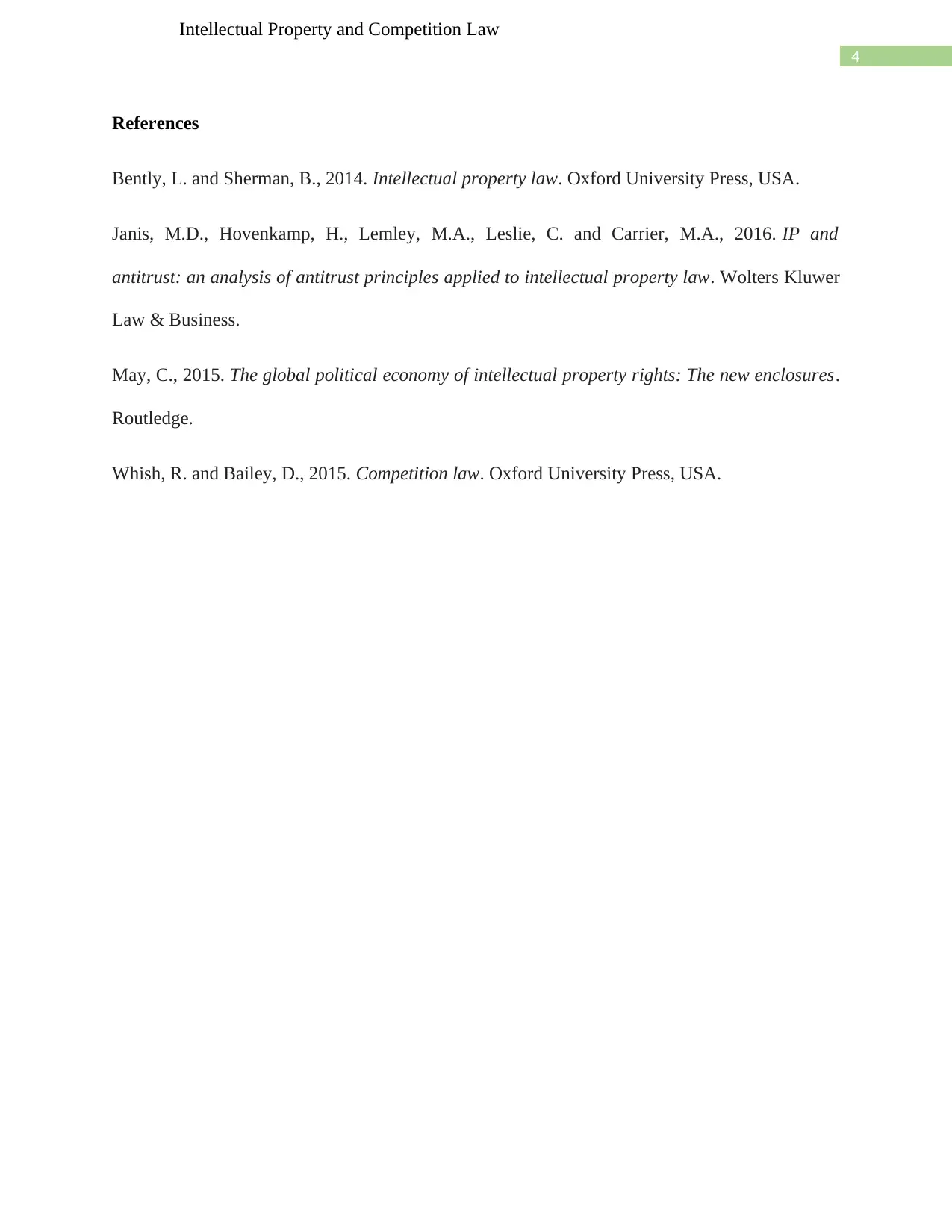Analysis of Intellectual Property Rights and Competition Law
VerifiedAdded on 2023/06/08
|5
|938
|408
Report
AI Summary
This report delves into the intricate relationship between intellectual property rights (IPR) and competition law, highlighting their interconnectedness in fostering fair market practices and societal welfare. It examines how IPR, encompassing patents, copyrights, and trademarks, provides exclusive rights incentivizing innovation, while competition law ensures transparency and fair marketing strategies. The report explores the impact of these laws on national and international business, emphasizing the roles of licensing contracts, technology transfer, and patent pools in promoting competition and technological advancement. It also discusses the importance of compliance, implementation, and enforcement of these laws, suggesting avenues for enhanced legal awareness and effective leadership in driving voluntary compliance within businesses. The report aims to provide a refined view on the interplay of IPR and competition law, analyzing various legal regimes and cases to understand how technology influences business law and facilitates legal compliance.
1 out of 5












![[object Object]](/_next/static/media/star-bottom.7253800d.svg)